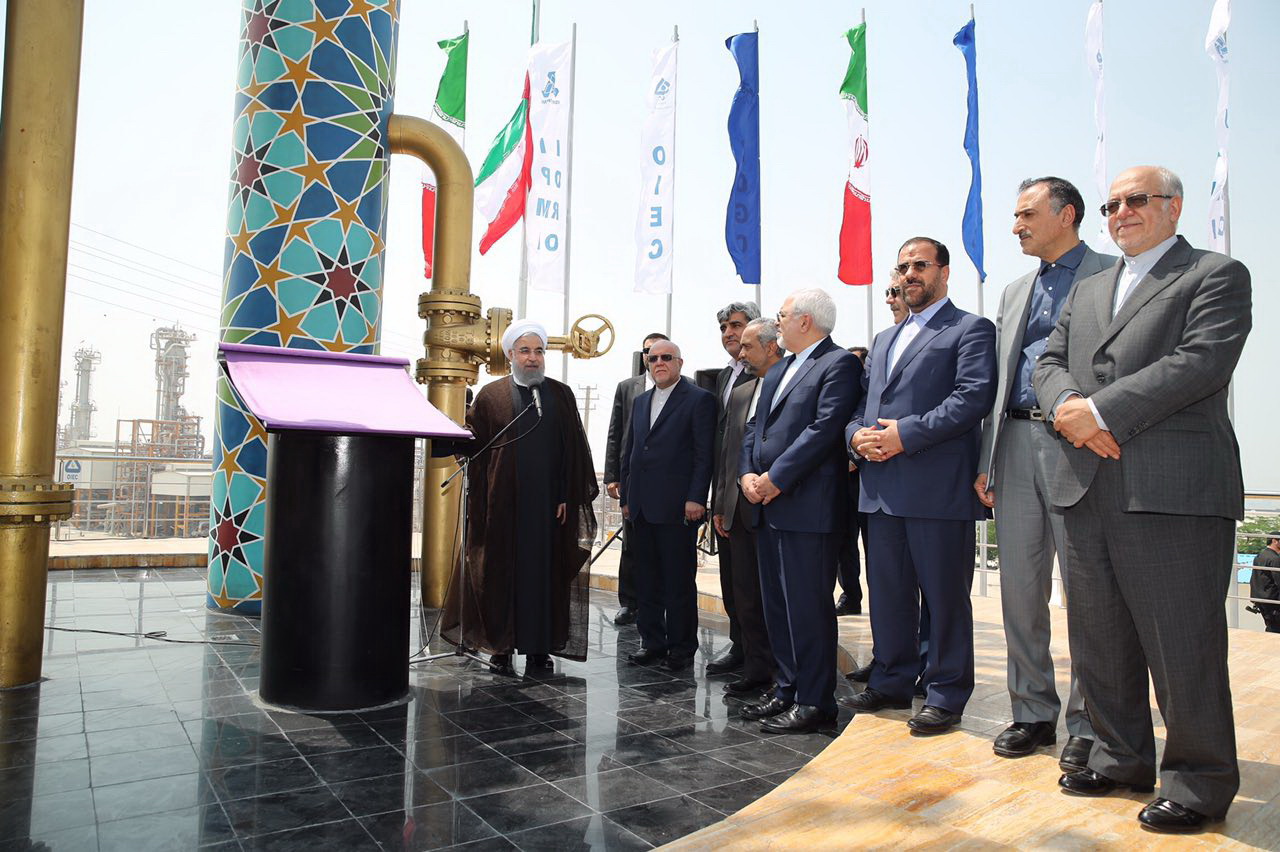President Hassan Rouhani on Sunday inaugurated $20 billion worth of gas and petrochemical projects in Asalouyeh, Bushehr Province, in what is hailed as the biggest launch of industrial projects in Iran's economy.
Five phases of the giant South Pars Gas Field, namely phases 17-21, became fully operational on Sunday, each with a daily production capacity of 28 million cubic meters. The new production capacity has reportedly leveled Iran's gas output with that of Qatar from the joint gas field in the Persian Gulf after over a decade of investments and development.
The new South Pars phases are also designed to produce 200,000 barrels per day of gas condensates as well 3 million tons of ethane and 3 million tons of liquefied petroleum gas annually, state news agency IRNA reported.
"Today marks the inauguration of the biggest investment in the history of Iran's oil, gas and petrochemical sectors," Rouhani said during his one-day visit to Asalouyeh. He was accompanied by Foreign Minister Mohammad Javad Zarif, Oil Minister Bijan Namdar Zanganeh, and Mohammadreza Nematzadeh, the minister of industries, mines and trade.
"South Pas gas output has more than doubled to 575 million cubic meters a day from 240 mcm/d in four years. Production from the oil layer of South Pars officially begins today along with several petrochemical projects," Rouhani added.
Takht-e Jamshid Pars Petrochemical Co, mono-ethylene glycol (MEG) production unit of Morvarid Petrochemical Plant, polystyrene unit of Entekhab Petrochemical Plant and Phase 2 of Kavian Petrochemical Plant in Asalouyeh officially came on stream on Sunday.
The plants will increase annual petrochemical production capacity by 2 million tons, worth an estimated $2 billion.
The president also inaugurated a long-awaited plan to produce crude oil from the giant gas field. According to reports, Iran is drawing around 25,000 barrels per day from the offshore South Pars crude oil layers via a large floating production, storage and offloading vessel.
Efforts to tap into oil deposits of South Pars began in 2004, but the plan was plagued by financial and operational constraints.
Qatar, which started extracting oil from the field in 1991, has already drilled more than 300 wells with the help of international oil giants. It has reportedly extracted more than 1 billion barrels of crude from the joint field during the last 25 years.
Iran aims to raise crude production from South Pars to 35,000 barrels a day in the first phase. The oil layer of South Pars field, located in the center of the Persian Gulf and 130 km off the Iranian coast, and adjacent to Qatar's territorial waters, holds an estimated 14 billion barrels of oil in place.
South Pars Project
South Pars' development started in early 2000s in 24 phases, roughly a decade after the Persian Gulf Arab neighbor began drillings in the joint field, known as the North Dome in its territory.
Iran has earned a total of $191 billion from South Pars since the beginning of gas production from the mega project, Ali Kardor, chief executive of National Iranian Oil Company, said on Sunday.
"$71 billion have been invested to develop offshore and onshore sections of South Pars, excluding the pipelines," Kardor said, adding that Iran produced more than 155 billion cubic meters of gas in fiscal 2016-17 that ended on March 20.
The Rouhani administration accelerated the development of South Pars in an effort to draw level with Qatar in gas production from the joint field.
In March 2015, Rouhani inaugurated Phase 12 of South Pars, known as the biggest Iranian gas project in history, and phases 15 and 16 came into operation in the beginning of last year.
South Pars is the world’s largest gas field shared by Iran and Qatar, covering an area of 3,700 square kilometers of Iran’s territorial waters in the Persian Gulf.
It is estimated to hold 51 trillion cubic meters of gas and huge deposits of gas condensate, a type of ultra light crude. The field is known as the North Dome in Qatar.
Tehran seeks to raise gas production capacity to a record high of 1.1 billion cubic meters annually by March 2018 on the back of bigger supplies from South Pars.


